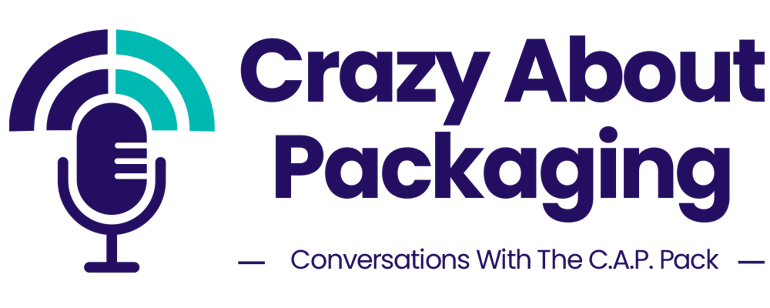
The demand for sustainable packaging and increased recycling is both understandable and reasonable. However, it is a surprisingly complex issue that affects every aspect of the packaging industry, such as processing, manufacturing, transportation, and distribution of consumer packaged goods.
The C.A.P. Pack returns for episode 3 to discuss the scope of challenges in recycling a variety of plastics and reintegrating those recycled materials into production lines. We also share our insights on the best ways to move forward at an industry-wide scale.
You can watch or listen to the podcast now on our website, or subscribe on Spotify, Apple, and Google. Here are a few segments that we cover:
Sneak Peek for Episode #3
Origins of Sustainability Concerns
Food packaging used to be about getting food into a package that met application requirements & economics. Now, producers have more responsibility in regards to finding better solutions than they have today. Sustainability was simply not a consideration when the packaging infrastructure was created. On the positive side, understanding where the sustainability problem comes from helps us determine the best ways to solve it.
Mike recalls when he saw the most significant changes in the industry: “It was when our CPG [consumer packaged goods] customers started to actually put commitments on the table in terms of sustainability and recycling rates and improving packaging.” Sustainability is a group effort, and everyone needs to be committed toward our shared goals in order to see meaningful improvements.
Importance of Emotional Connection
As Maya Angelou once said, “People will forget what you said, people will forget what you did, but people will never forget how you made them feel.”
Much of plastic’s reputation comes down to the way it makes us feel — and right now, plastic food packaging that ends up as waste makes us feel pretty bad. People have a negative emotional reaction to seeing highly visual plastic waste in our environment, which drives the general idea among the public that plastic packaging is inherently wasteful. On the other hand, consumers don’t frequently think of the positive connotations of that same plastic packaging: they forget that it can also reduce food waste with increased shelf life, ship clean water to people without access, and ensure sterility in medical equipment. Emotions are a powerful thing, and associating the right emotions with plastic packaging can go a long way toward shifting its reputation.
Challenges Integrating Recycling
Recycling has some significant hurdles to overcome. For example, many food packaging materials use a combination of different plastics to create specific qualities like barrier protection from oxygen and moisture. Unfortunately, these hybrid materials are challenging to re-process, which makes them essentially unrecyclable.
Natalie explains how even materials that can be recycled may not be recyclable: “In order for a material to be considered recyclable in the US, 60% of consumers must have access to a recycling program that recovers that item.” So, without local access to properly equipped recycling centers, even reusable materials will go to waste.
Another major problem is collecting enough recyclable plastic to be financially viable. The Environmental Protection Agency estimated a 9% plastic recycling rate in 2018, which dropped to only 5% in 2021. With so little material going to recycling centers, it may not be enough to pay for all the expenses of running recycling programs.
Moving Forward, Not Backward
A common response to plastic waste is the desire to go back to the materials of old, like glass, tin, and aluminum. Although non-plastic materials can make people feel better compared to plastics, they actually have a larger cost on the environment. Glass and metals are much heavier, which consumes more material and increases transportation costs. In fact, plastics actually reduce environmental costs by nearly 4 times. Clearly, the way forward is not to give up on plastics, but to truly commit to recycling efforts and building a circular economy.
"Imagine if we could move the recycling rate from 5 or 6 percent to 50 or 60 percent. The exponential benefit would be unbelievable." - Mike
Going back to pre-plastic packaging is not the solution to sustainability. Instead, industry-wide collaboration is essential to improve recycling rates, sorting techniques, and integration of recycled materials for CPG producers.
Join the Conversation
What do you think about sustainability and recycling in the packaging industry? within the world of packaging. Follow us on Twitter, LinkedIn, Facebook, and Instagram and share your thoughts! And be sure to check out the podcast on Spotify, Apple, Google, or our website.



